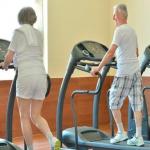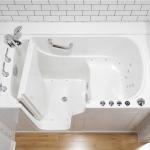The Role of Technology in Supporting Assisted Living
As our society ages, the need for assisted living facilities is increasing rapidly. Many older adults require assistance with tasks such as bathing, dressing, and managing medications but still wish to maintain independence and privacy. Assisted living facilities provide residents with a supportive environment that allows them to maintain a sense of autonomy while receiving the care and assistance they need.
Technology has played an increasingly important role in supporting assisted living in recent years. From smart home devices to wearable technology and telehealth services, a wide range of technological tools can help older adults live more comfortably and safely in assisted living facilities. These technologies can enhance the quality of life for residents, improve their health outcomes, and provide peace of mind for family members and caregivers.
Finding the Right Facility
Many assisted living residences offer an encouraging atmosphere for senior citizens in La Grange, Illinois. These facilities provide a variety of amenities and services, such as on-site medical treatment, 24-hour supervision, and help with everyday life. By receiving the assistance they require to live comfortably and safely, residents of assisted living in La Grange IL can keep some degree of freedom. Also, these establishments frequently provide a variety of social and recreational events to support residents' continued engagement and activity. The following are areas where technology can support elderly relatives.
Smart Home Technology
Residents of assisted living facilities can have more control over their surroundings and independence using smart home technologies. Residents may find maneuvering through their living areas simpler if they have features like voice-activated assistants, automated lighting, and temperature control systems. By giving real-time information on things like motion activity and bathroom use, smart home equipment can also assist staff in monitoring residents' well-being.
Health Monitoring Technology
The staff at assisted living facilities can check residents' health using health monitoring technologies and give them the care they need. Residents may keep track of their physical activity levels and promptly summon assistance in case of emergencies thanks to wearable technologies such as fitness trackers and medical alert systems. Staff members can track medication compliance and check vital indicators with health monitoring technology. These innovations can aid in preventing health issues and guaranteeing residents receive prompt medical attention.
Communication Technology
By using communication technology, residents might feel more connected to their communities and their loved ones. Face-to-face interactions with distant friends and family members can be facilitated through video chat tools like Skype and Zoom. Residents may keep up with news and activities in their areas by using social media sites like Facebook and Twitter. Residents who use communication technologies can retain their social networks and avoid feeling isolated.
Medical Technology
Residents of assisted living homes frequently receive medical care from on-site medical staff. Telehealth and remote monitoring are two examples of medical technology that can assist employees in providing more effective and efficient care. Thanks to telehealth, which enables virtual consultations with healthcare professionals, residents may obtain medical attention without leaving the facility. Remote monitoring technology can assist employees in keeping track of vital signs and spotting health issues before they become more serious.
In conclusion, technology is crucial in enabling assisted living and improving residents' quality of life. The use of medical technology, communication technology, smart home technology, health monitoring technology, and other forms of technology can help residents live more independently, access prompt medical care, and keep up social ties. Assisted living facilities should offer a supportive living environment for senior citizens who require assistance with daily life activities. These facilities use technology to deliver quick and effective care while encouraging residents to lead active and engaged lives.
More to Read:
Previous Posts:
Next Posts:




